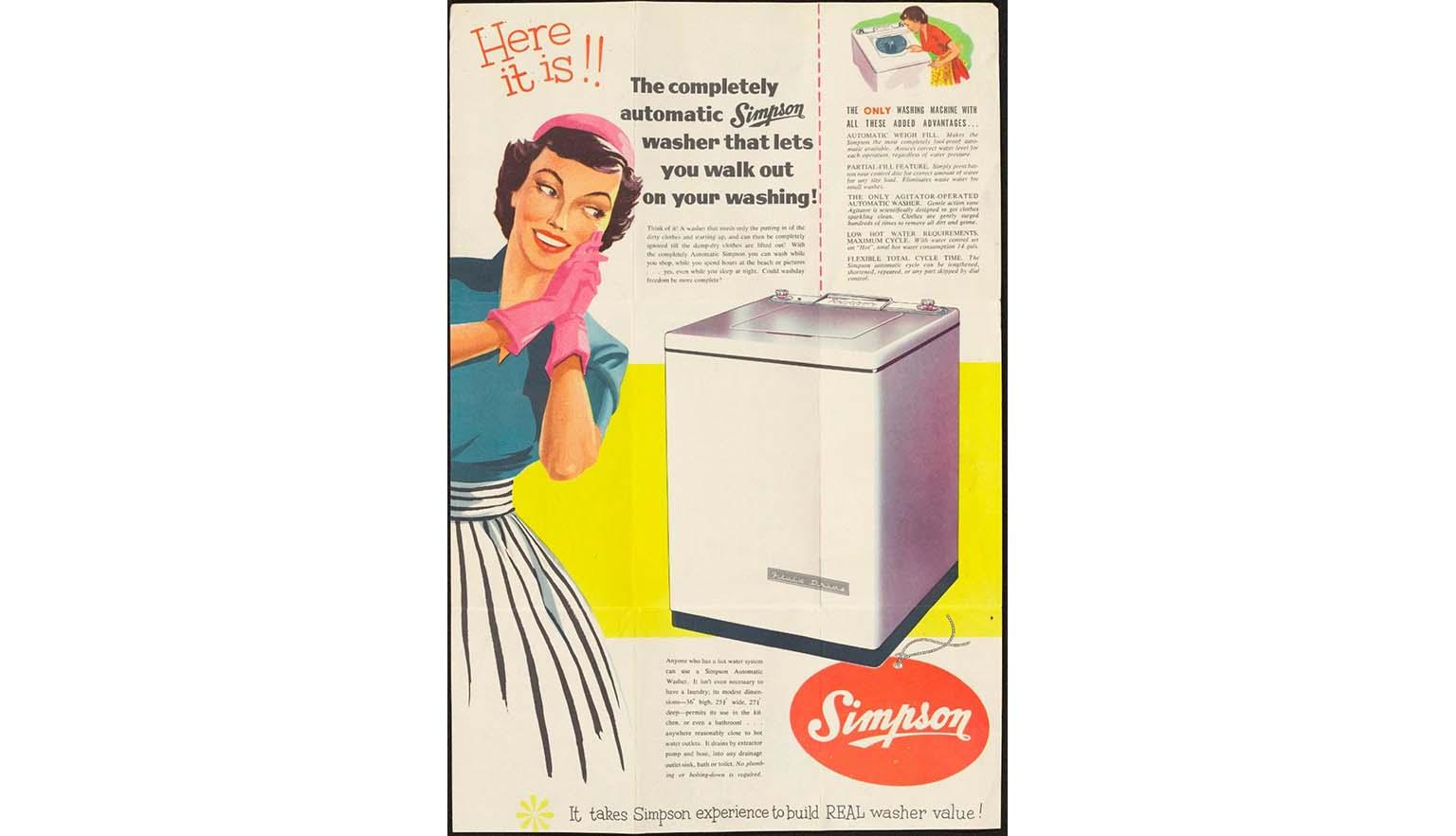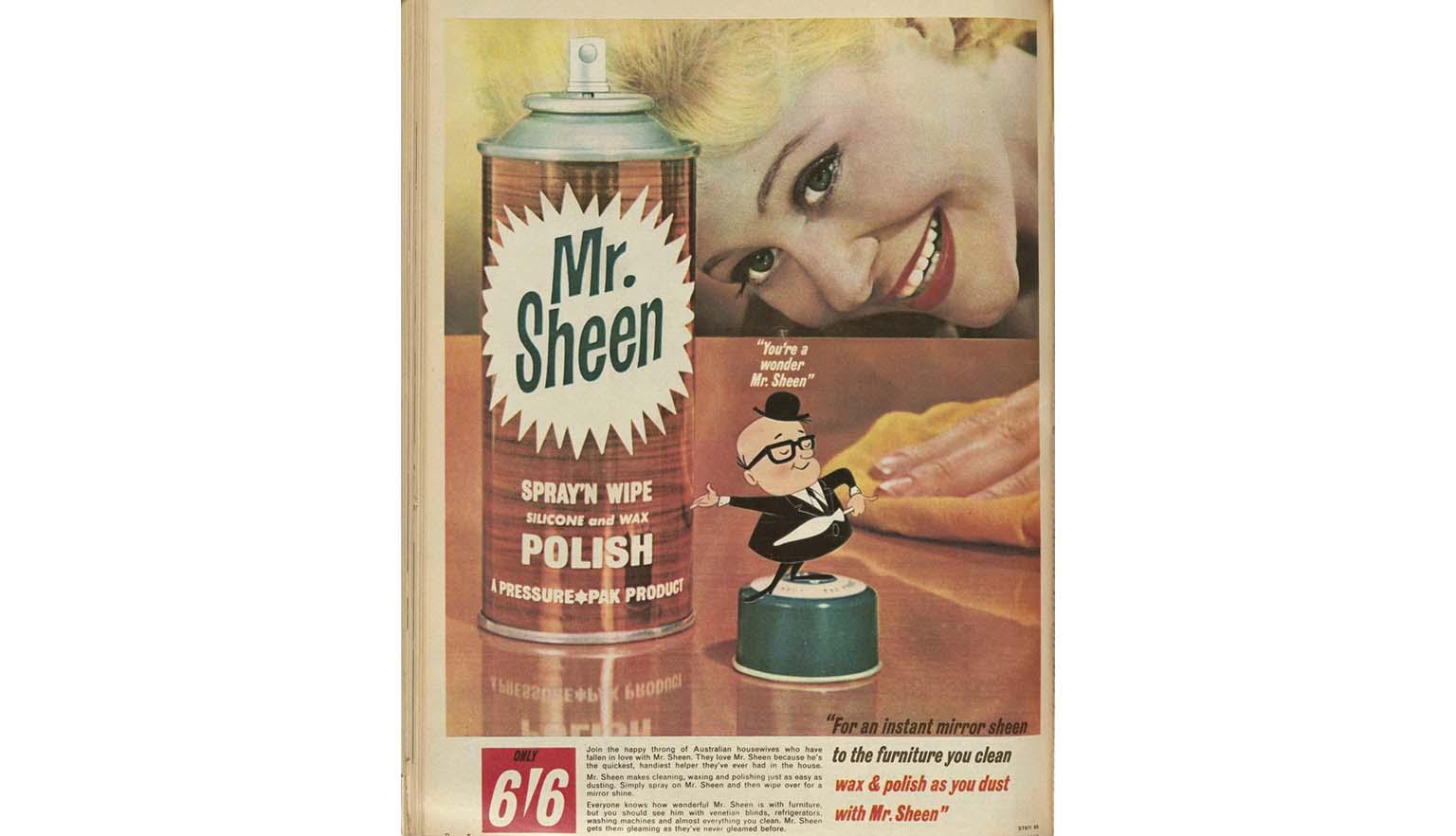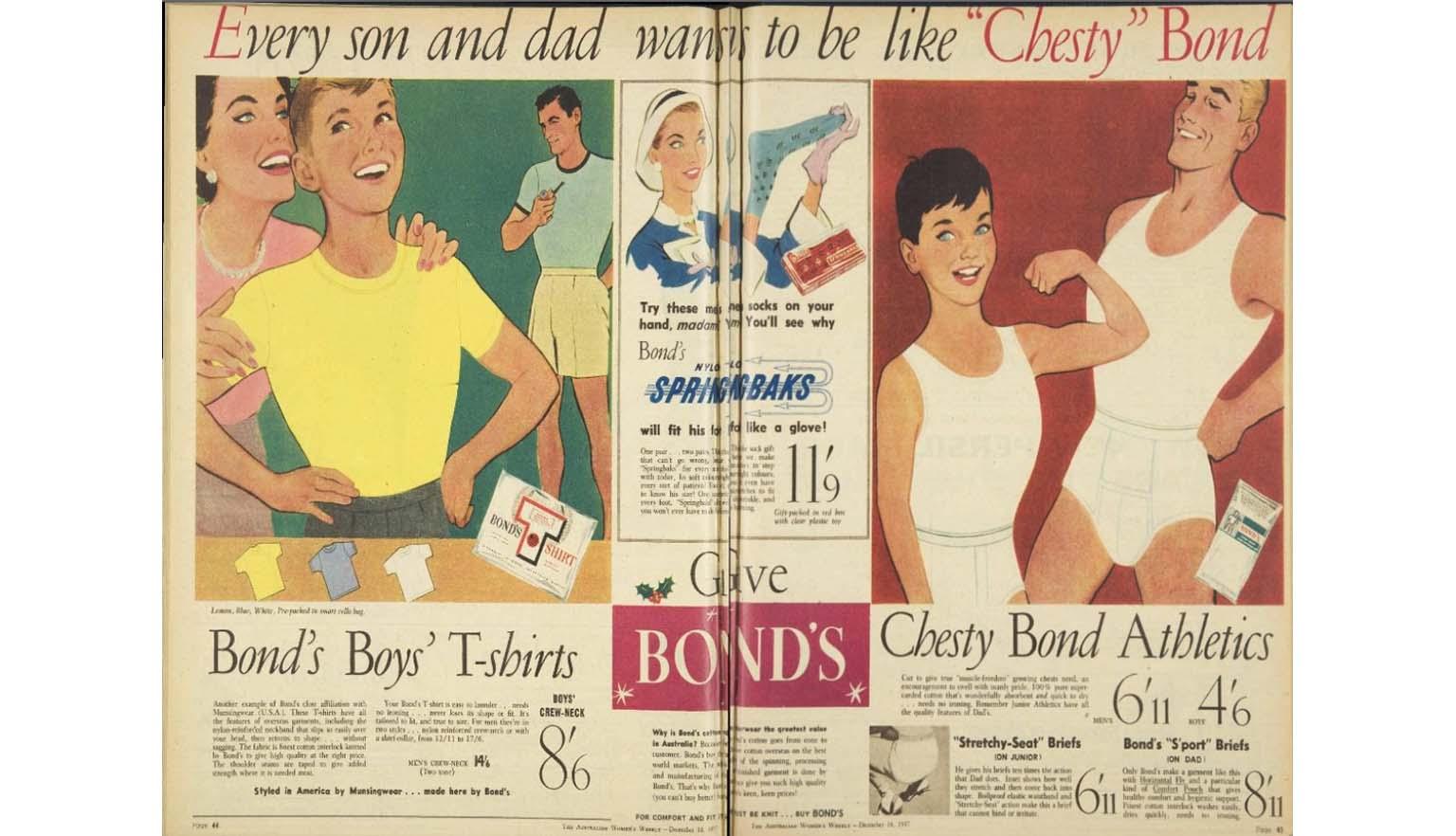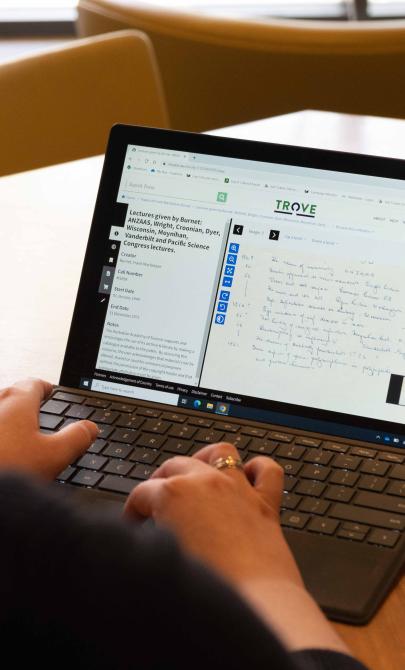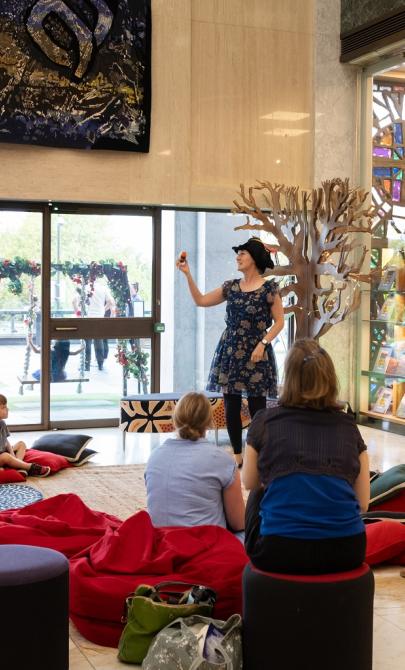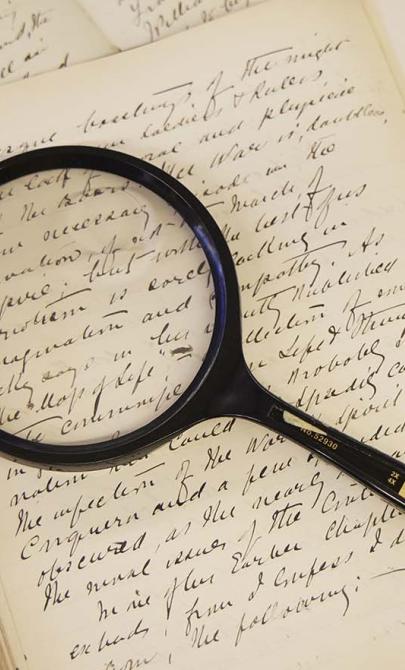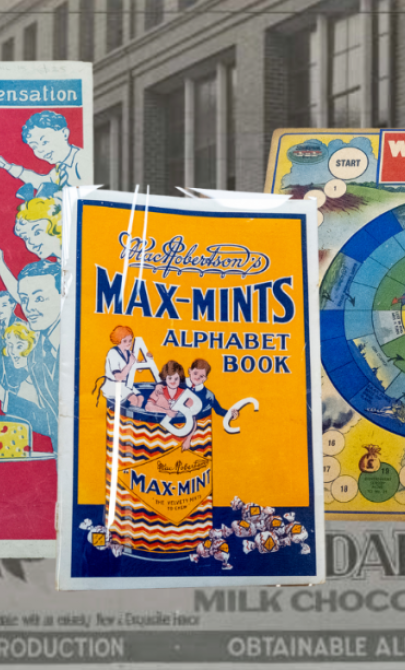Selling modernity
Postwar era advertising
The postwar years saw advertising shape ideas about the ideal Australian home, masculinity, feminine beauty, and health.
A new consumer culture
After the Second World War, Australia focused on national reconstruction, driving migration and large-scale infrastructure projects. Suburban expansion cemented the quarter-acre block as central to the "Australian dream."
Between the late 1940s and 1960s, around 70% of Australians became homeowners. Advertisers capitalised on this shift, promoting products that fit this new suburban lifestyle—especially home appliances.
Life-changing electrical appliances
Appliances were marketed as time-saving innovations that transformed household chores. The Simpson washing machine campaign, Hooray! It’s Washday! – My Day Off!, portrayed washing as freedom rather than work.
Activity 1: Technology and Consumer Culture
Have students brainstorm postwar technological advancements that shaped daily life. Discussion points:
- How did consumer culture in the United States influence Australia in the postwar era?
- In what ways were developments in America and Australia similar or different?
Activity 2: Economic Changes and Advertising
Have students use the Internet to investigate the economic circumstances of the postwar era.
- What financial situation was Australia in after the Second World War?
- How did this situation compare with other countries?
- What changes to work roles did the end of the war bring?
- What was the most common type of housing built after the war? Where were these houses built?
Discuss how these factors shaped advertising and influenced the consumer landscape, particularly for home appliances, clothing, and beauty products.
Advertising in ‘The Weekly’
The Australian Women’s Weekly was a key advertiser in the 1950s and 1960s and produced advertisements of stunning impact and colour.
Using rotogravure printing, the magazine guided advertisers in preparing high-quality ads that became a dominant feature—and a key revenue source.
By 1957, The Weekly had a circulation of over 750,000 copies. A single issue of 87 pages could include:
- 24 full-page advertisements
- 2 double-page advertisements
- 75 smaller advertisements
The influence of The Weekly
By the 1960s, The Weekly was read in one in four Australian homes—the highest per capita circulation of any women’s magazine in the world.
Advertisers targeted women, recognising their influence over household spending.
Activity 3: Analysing Advertisements in The Weekly
Ask students, why do you think The Australian Women’s Weekly was such a popular publication for companies to advertise in?
Have students browse issues of The Australian Women’s Weekly from the 1950s and 1960s on Trove. Using the same categories as before (the ideal Australian home, masculinity, feminine beauty, and health), finding one ad for each category to answer this series of questions:
- What kind of mood does the ad create? How does it do this?
- What is it about? Does the ad tell a story?
- Is the product a major one-time purchase or a consumable item?
- What sort of people is the ad targeted at? Why is that sort of people targeted?
- Are there any political, economic, cultural, social or gender attitudes reflected in the ad? What are they?
- Is sustainability or energy efficiency emphasised in the advertising. Why? Why not?
- Is the brand or product still around today?
Have students give a short oral presentation on one of their ads to simulate a class discussion.
Acknowledgement
This resource has been generously supported by Optus. Through the Digital Thumbprint program and Kids Helpline @ School, Optus supports digital knowledge and the positive use of technology.
If you’d like to learn more about the Digital Thumbprint program, please visit the website or, if you’re interested in booking the program at your school, you can register your interest.


